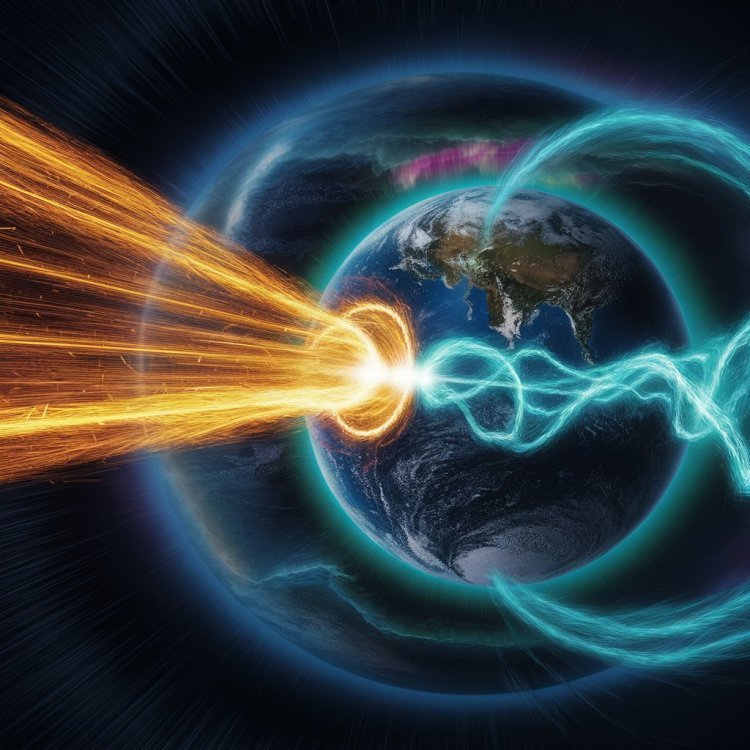Understanding Geomagnetic Storms: Impacts and Phenomena
This article explores geomagnetic storms, their causes, and their profound impacts on Earth's technological infrastructure and natural phenomena. It covers the disruption of communication and navigation systems, the effects on the electric power grid, and the stunning aurora displays. Additionally, the article discusses the importance of monitoring and forecasting geomagnetic storms to mitigate their impacts.

Understanding Geomagnetic Storms: Impacts and Phenomena
Geomagnetic storms are powerful natural phenomena resulting from significant interactions between the solar wind and the Earth's magnetic field. These storms can have profound impacts on our planet’s technological infrastructure and natural phenomena. This article delves into the causes, effects, and consequences of geomagnetic storms, highlighting their significance in our technologically dependent world.
What is a Geomagnetic Storm?
A geomagnetic storm occurs when there is a substantial transfer of energy from the solar wind into the Earth's magnetosphere, leading to significant disruptions. The solar wind, a stream of charged particles emitted by the Sun, carries with it a magnetic field. When this solar wind encounters the Earth’s magnetic field, the interaction can lead to rapid changes in the magnetosphere’s currents, plasmas, and magnetic fields, resulting in a geomagnetic storm.
Causes of Geomagnetic Storms
Geomagnetic storms are primarily caused by two types of solar events: coronal mass ejections (CMEs) and high-speed solar wind streams.
-
Coronal Mass Ejections (CMEs): CMEs are large expulsions of plasma and magnetic fields from the Sun's corona. When a CME is directed towards Earth, it can collide with the magnetosphere, causing significant disturbances. CMEs are often associated with solar flares, which are intense bursts of radiation emanating from the Sun's surface.
-
High-Speed Solar Wind Streams: High-speed solar wind streams originate from coronal holes, which are regions on the Sun's surface where the magnetic field opens up and allows solar wind to escape. When these fast-moving streams reach Earth, they can interact with the magnetosphere, triggering geomagnetic storms.
Impacts of Geomagnetic Storms on Earth
Geomagnetic storms can have a variety of impacts on Earth, particularly affecting our technological systems and infrastructure. Some of the most significant impacts include:
-
Disruption of Communications and Navigation Systems: Geomagnetic storms can interfere with high-frequency radio communications used by aviation, maritime, and emergency services. The ionosphere, a layer of the Earth’s atmosphere that reflects radio waves, becomes highly disturbed during geomagnetic storms, leading to signal degradation and loss. This interference can also affect GPS signals, causing errors in navigation and timing information critical for various applications, including military operations and commercial aviation.
-
Disruption of Electric Power Grid and Infrastructure: One of the most severe impacts of geomagnetic storms is on the electrical power grid. The rapid changes in the Earth's magnetic field induce electric currents in long conductors, such as power lines. These geomagnetic-induced currents (GICs) can overload transformers and other critical components, potentially leading to widespread power outages and equipment damage. Historical events, such as the March 1989 geomagnetic storm, have demonstrated the vulnerability of power grids to these disturbances, resulting in massive blackouts.
-
Spectacular Aurora Displays: One of the most visually stunning effects of geomagnetic storms is the aurora borealis (Northern Lights) and aurora australis (Southern Lights). These light displays occur when charged particles from the solar wind collide with atoms in the Earth's atmosphere, causing them to emit light. During intense geomagnetic storms, the auroras can be seen at much lower latitudes than usual, providing a breathtaking natural spectacle.
-
Geomagnetic Induced Currents (GICs) in Pipelines: Pipelines can also be affected by geomagnetic storms. The induced currents can cause increased corrosion in pipelines, leading to potential leaks and failures. The oil and gas industry must monitor and mitigate these effects to ensure the integrity and safety of their infrastructure.
-
Satellite Orbit Disruptions: Satellites in low-Earth orbit (LEO) are susceptible to increased atmospheric drag during geomagnetic storms. The storm heats the Earth’s upper atmosphere, causing it to expand and create additional resistance for satellites. This increased drag can alter satellite orbits, requiring adjustments to maintain their intended paths and prolong their operational lifetimes.
-
GPS Positioning Errors: The accuracy of GPS systems is significantly affected by geomagnetic storms. The ionospheric disturbances caused by these storms can lead to signal delays and errors in positioning information. This can impact various sectors reliant on precise GPS data, such as agriculture, surveying, and autonomous vehicle navigation.
Preparing for Geomagnetic Storms
Given the potential impacts of geomagnetic storms, it is crucial to develop strategies to mitigate their effects on our technology and infrastructure. Some measures include:
-
Monitoring and Forecasting: Advanced monitoring of solar activity and geomagnetic conditions is essential for predicting geomagnetic storms. Organizations like NASA and the NOAA’s Space Weather Prediction Center (SWPC) provide real-time data and forecasts, enabling timely warnings and preparations.
-
Hardening Infrastructure: Power grids and other critical infrastructure can be designed or retrofitted to withstand geomagnetic disturbances. This includes installing devices that can block or mitigate GICs, as well as reinforcing the physical infrastructure to prevent damage during extreme events.
-
Developing Response Protocols: Establishing protocols for responding to geomagnetic storms can help minimize their impact. This includes coordinating with utilities, communication providers, and other stakeholders to ensure a rapid and effective response during a storm.
Conclusion
Geomagnetic storms are powerful natural phenomena with the potential to significantly impact our technologically dependent society. Understanding their causes, effects, and consequences is essential for preparing and mitigating their impacts. By advancing our monitoring capabilities, hardening infrastructure, and developing effective response protocols, we can enhance our resilience to these cosmic events and continue to benefit from the technological advancements that define our modern world.
What's Your Reaction?




















